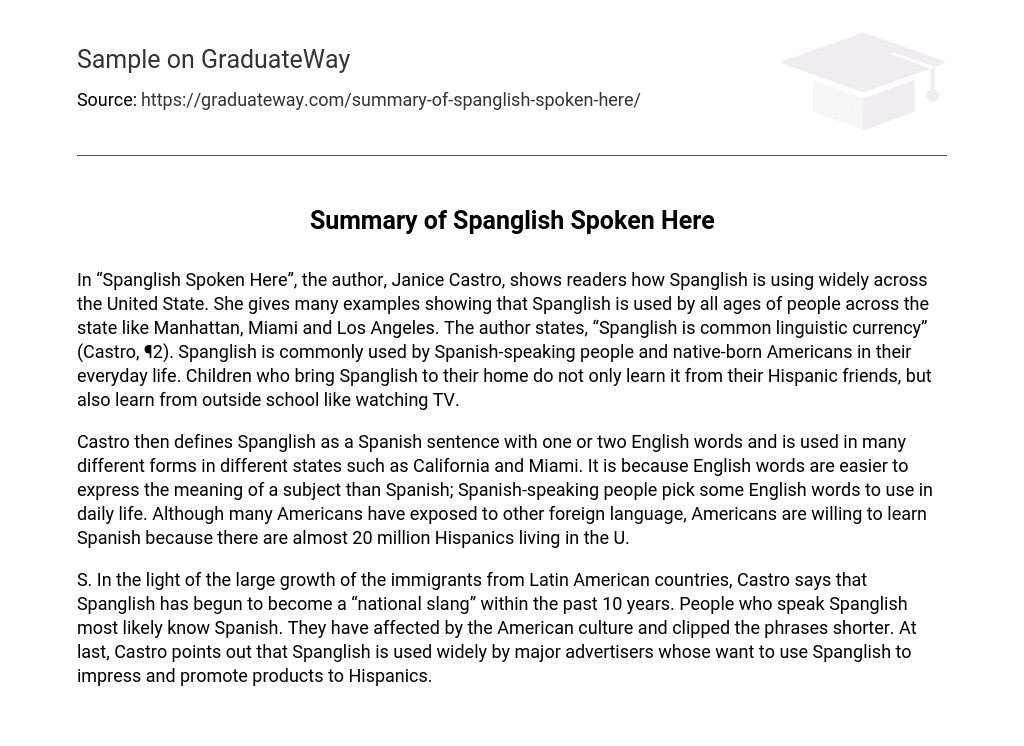In “Spanglish Spoken Here”, the author, Janice Castro, shows readers how Spanglish is using widely across the United State. She gives many examples showing that Spanglish is used by all ages of people across the state like Manhattan, Miami and Los Angeles. The author states, “Spanglish is common linguistic currency” (Castro, ¶2). Spanglish is commonly used by Spanish-speaking people and native-born Americans in their everyday life. Children who bring Spanglish to their home do not only learn it from their Hispanic friends, but also learn from outside school like watching TV.
Castro then defines Spanglish as a Spanish sentence with one or two English words and is used in many different forms in different states such as California and Miami. It is because English words are easier to express the meaning of a subject than Spanish; Spanish-speaking people pick some English words to use in daily life. Although many Americans have exposed to other foreign language, Americans are willing to learn Spanish because there are almost 20 million Hispanics living in the U.
S. In the light of the large growth of the immigrants from Latin American countries, Castro says that Spanglish has begun to become a “national slang” within the past 10 years. People who speak Spanglish most likely know Spanish. They have affected by the American culture and clipped the phrases shorter. At last, Castro points out that Spanglish is used widely by major advertisers whose want to use Spanglish to impress and promote products to Hispanics.





